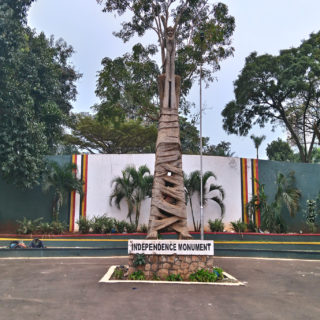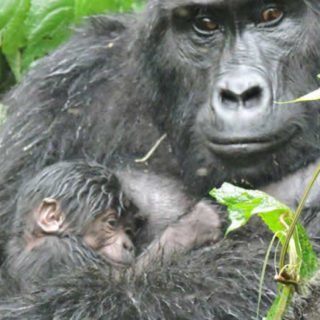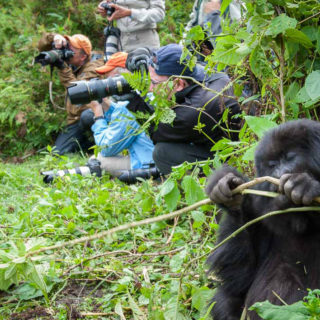Kampala City Tour Must Visit Places
Kampala City, commonly known as the city of seven hills, is the capital city of Uganda, epicenter of salable life and the pew of government as well as the Parliament and historical cenotaphs. The City alone bids cultural devotees lots of prospects to escalate the country’s cultural miscellany.
Kampala city tour will give you the prospect to crisscross the most important milestones in this meek city to experience the bygone monuments that have molded the destiny of this great nation. This Uganda tour gives you an indulgent of the Kampala City traditional lifestyle, the sole behaviors of Ugandan people, the ethos, the backgrounds and antiquity.
There are 4 means that you can use to sight see and tour Kampala while doing a Kampala city tour and these include, on foot, on a mountain Bike, or a Boda Boda and in a vehicle.
KAMPALA CITY PLACES TO VISIT INCLUDE;
KASUBI TOMBS
This is the domicile were tumbled kings of Buganda Kingdom are Buried. These tombs of Buganda kings institute a site espousal almost 30 hectares of hillside within Kampala district.
At its staple on the hilltop is the prior palace of the Kabakas of Buganda, built in 1882 and altered into the royal burial ground in 1884. Four royal tombs now fib within the Muzibu Azaala Mpanga, the main edifice, which is spherical and triumphed by a vault.
It is a key example of an architectural triumph in organic materials, predominantly wood, thatch, reed, wattle and blot. The spot’s main worth lies, however, in its insubstantial values of credence, piety, consciousness and uniqueness.
WAMALA TOMBS
It is set in an attractive and enormous view, the notable grass thatched tombs are a 30 minute drive from Kampala located in Nabweru Sub-county, Wakiso district, sand the tombs are the burial spot of Ssekabaka II, the 29th king of Buganda. From the hills on which the Tombs are situated, one can see Kagoma Hill which Ssuna constructed a place for his mother
Naggalabi Buddo Coronation site tainted Masaka road is an alternative place to discern Buganda which has remained robust since the 17th century. The spot is situated on a hilltop with panoramic views of Kampala and its environs. Naggalabi Buddo is the momentous heart of Buganda Kingdom telling the history of the commencement of Buganda Kingdom.
KABAKA’S LAKE
Kabaka’s Lake situated within Kampala is a manmade lake that revives the air in Kampala with soothing views after a stiff day of Kampala tours. This lake was excavated out on the remits of Buganda’s Kabaka Mwanga in the 1880’s for political motives. The Kabaka’s palace is not far from the lake spot and is one of Uganda’s best kept secrets positioned on Mengo hill within central Uganda.
Uganda Martyrs’ Shrine in Namugongo is a throttle hold for religion and Christianity in Uganda. Namugongo Martyrs’ Shrine was constructed in rectitude of the Uganda Martyrs slain by Kabaka Mwanga of Buganda between 1885 and 1887 at Namugongo after their denial to renounce.
The sacred place is the pulverized where more than 20 Christian youth men were martyred on commands of hold sway Buganda king Mwanga II in 1886. Many of the burnt men were Kabaka’s advisers.
Bahai Temple is set up 6km from Kampala Gayaza road in enormous splendor, sympathetic in Africa. The veneration temple and its structural design are alluring to very tourist that takes on Kampala tours. The temple has seven ingresses for seven religious faiths in Uganda and all people are permitted to enter spontaneously.
The attractive gardens are good for photography and lessening. Tourists are also acquainted with the history of the Bahal, faith that make it interesting. It is a domicile only known for devotions and rumination.
St. Paul’s Namirembe Cathedral is the Anglican Church established high up on Namirembe Hill with astonishing views of Kampala both by day and night. On Rubaga hill lies
St. Mary’s Cathedral hitherto royal site for Kabaka Mutesa. It was assembled between 1914 and 1925 with the help of the Catholics’ bequests from the Missionary churches abroad.
Kibuli Mosque found in the suburbs of Kampala in tranquil backlogs of palm trees and a grandiose white and green, it is the most popular mosque in Uganda considered as the entre of Muslim activities. It is where the top Sheiks live and lies on one of Kampala’s original 7 hills (Kibuli) offering unlimited views of the capital city.
Prince Badru Kakungulu of Buganda bestowed the land where the mosque stands to the Muslim frat in Uganda. The new vault mosque at Old Kampala is awe-rousing site, never ever seen in Uganda!
Uganda Museum is Situated on Kira Road in Kampala city and dynasties a sole collection of ethnological parades casing hunting, agriculture, war, religion, witchcraft and natural history, as well as a great assortment of traditional musical instruments from all over the continent. The edifice also dynasties the Uganda Society and their Library with a wide array of books on Uganda’s history and culture.
Bulange royal building
Bulange is the senate of the Buganda kingdom. Legislature sessions are held every month to deliberate the matters regarding tradition, expansion and culture and it is visited by the Kabaka (king) twice a year to open and close the conferences correspondingly.
The Uganda National Mosque (Gaddafi Mosque)
The Gadhafi mosque was fabricated with sustenance from Muammer Gadhafi, the Libyan leader and it is the nationwide mosque in Uganda.
This is the oldest and largest mosque in Uganda located on old Kampala hill 2 kilometers from the city center. Accomplished in 2006, it orchestras up to 15,000 congregations and can hold another 1,100 in the gallery, while the promenade will accommodate for another 3,500. Colonel Muammar Gaddafi of Libya custom-made the mosque as a gift to Uganda, and for the subsidy of the Muslim populace.
The mosque hordes the headquarters of the Uganda Muslim supreme council and walking upstairs to the last point provide tourists with a remarkable view of Kampala and the adjacent communities from above. Tourists are also taught in depth the Muslim belief and culture. Both ladies and men dress decently in long trousers, as women put on long dresses with veils to cover their heads.
Craft markets.
Kampala has a great deal of craft sooqs (either permanent or weekly/monthly). Stopover a craft market and purchase a memento of Ugandan Heritage from Prints, Opus, portraits and missives.
Independence Monument
Succeeding Uganda’s Independence from the British in 1962, the Uganda Independence Monument was set up and it is sited in the epicenter of Kampala City, just subsequent to Sheraton Hotel.
Kabaka’s Palace
The Kabaka’s palace is the sanctioned abode of the King of Buganda Kingdom (Kabaka). It is sited at the zenith of Bulange Hill and had existed for eras. The conducted visit to Bulange will cover the Lukiiko Hall, the gardens and monuments and the Central Broadcasting Station (CBS), Zakariya Kisingiri’s house, one of the primogenital and bravura houses in Buganda positioned along the Royal Mile, ‘Lukoma Nantawetwa,’ Kabaka’s roundabout (junction) on Rubaga road, Mengo and the ‘Empukku’; former Idi Amin’s Amin’s agony cavities cave inside the Lubiri.
Owino Market
A stopover at downtown proceeds you to St. Balikudembe (Bartholomew) market commonly known as Owino. This market is perchance the busiest in Kampala and is customarily jam-packed with a lot people.
Nakasero Market
Nakasero Market set within central Kampala is a one stop cradle for food stuffs especially the locally grown kind. People congregate Nakasero market to buy all varieties of vegetables, fruits and so much more.
The Parliament of the Republic of Uganda
The Uganda Parliament edifice is situated along Parliament Avenue in Central Kampala. Visiting this can only be done on appointment and concoct to be meticulously checked by security personnel at the gate.
Art galleries
There are plenty of art porticos where you can find beautiful art pieces for your satisfaction. One can visit Afriart, Makerere Art Gallery, Umoja Gallery among many others.
Old Kampala: Old Kampala sits at the unique Kampala Hill. It is where the first administrative blocks were built before the city extended and most administrative buildings were moved to a more central location. Old Kampala stances out because of the exclusive old colonial and Indian style architectural buildings. It has altered a little lately with more modern errands but still offers the best prospect to see how Kampala looked then and now.
The Ndere Centre: This cultural Centre is established outside the city center in an area known as Kisasi. The center vitrines the cultural heritage of all tribes in Uganda through traditional music, dance and drama among others. The center offers chance to learn how to cook local dishes and dance to local tunes.
Makerere University: Makerere University is the primogenital and largest public university in Uganda. It is one of the best 10 universities in Africa and is Uganda’s main center for research. The University is adjacent to the city center and was built on one of Kampala’s imaginative hills – Makerere hill.
The University commenced as a technical school in 1922 and later became part of the new University of East Africa. Under that organization, it began offering degrees from the University of London. In 1970, the university became sovereign after the University of East African riven into three main universities – Makerere University in Uganda, University of Dares Salaam in Tanzania and the University of Nairobi in Kenya.
The university has formed protuberant Graduates including presidents like Benjamin Mkapa of Tanzania, Mwai Kibaki of Kenya and the former president of Uganda Milton Obote.
Grounds: The Mandela National Stadium (known locally as Namboole stadium) is the major sporting ground in Uganda. This is the place to go if one wants to watch the top local teams like KCC, SC Villa, Express and URA in action. The arena has lately played horde to several large Christian crusades.
Other important sports grounds include the Lugogo hemmed in arena for cricket, tennis and other spots. The Lugogo Rugby Club is a preferred haunt for the youth who come to watch their desired Rugby teams scrimmage it out among themselves.





